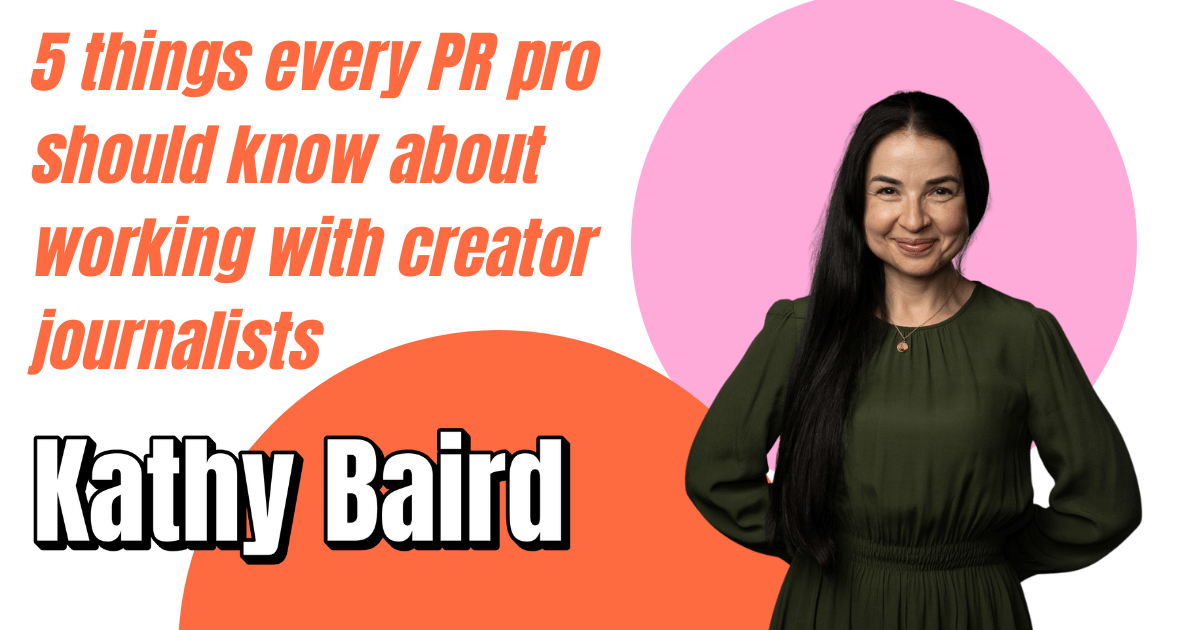This piece is published as part of the Top 50 Creator-Model Journalists of 2025 project.

I’ve been in Communications and PR for over two decades, and it’s clear to me that the Top 50 list represents a monumental shift in how we understand media today. The rise of creator journalism and news influencers is the new center of gravity. Those on this list are redefining how influence works across the media landscape; as independent journalists outside of traditional newsrooms they are shaping how audiences understand power, trust, and institutions. And they’re doing it on their own terms - faster, more personal, and with formats built for a feed rather than a front page. They think and operate in nuanced ways outside the traditional media box and our profession must learn how to better navigate this.
Over the past decade, PR has worked in the social influencer space alongside advertising teams, pulling together cohorts of content creators for diverse efforts and launches. But creator-model journalism outreach is not influencer marketing. It’s like working with smaller news organizations based on the trust of an individual voice and brand. Creator-model journalists are interested in trying new approaches, and many, if not all, of the guardrails in traditional newsrooms are maintained.
PR colleagues, we must evolve. Waiting an entire day for approval of a corporate statement or press release, or relying solely on traditional press lists means using an outdated playbook. I’m not suggesting we abandon traditional media. But we need an expanded understanding of media that includes this new generation of storytellers who move markets, sway public perception, and drive conversations in real time.
I’ve put together the this list to help you get up to speed – fast.
5 Takeaways for PR Professionals Navigating Creator-Model Media:
1. Get Fluent Fast
Follow creator journalists like the ones on the Top 50 list on TikTok, Instagram, Substack, and YouTube. Subscribe to their newsletters. Read their comments. Understand how they frame stories, build trust, and talk to their audiences. You can’t build relevance if you don’t speak the language of this new media ecosystem. Ask yourself: am I fluent in how creator journalists operate and connect with audiences? If not, make the change. The list provides a lot of examples to pay attention to.
2. Relationships Are with People, Not Publications
The creator journalism landscape is not publisher-led, it’s personality-led. Creator journalists are media brands in their own right, with distinct voices, loyal followers, and who speak directly to their communities. Treat these individuals like journalists, not amplification channels. Don’t send them mass emails or press release blasts. They are annoyed by corporate speak. Understanding their work and their medium is a must. We are building trust here one relationship at a time. Note to those inside PR agencies – this space is evolving daily and there’s a giant need and plenty of opportunity to build expertise here.
3. Formats Have Changed — Your Story Must Adapt
Most content in this space is not a 1,000-word article. It’s a video clip, a quote card, a visual explainer, or a short-form carousel. That means PR teams must be asset-ready and agile. Are you offering video snippets, raw visuals, or soundbites – formats actually usable for today’s audiences? A polished PDF or executive interview isn't enough. Think vertical video, real-time commentary, and flexible assets.
4. Impact Looks Different
A traditional media hit might get you impressions. A creator journalist post might get you community engagement, sentiment shift, and action. Success metrics are evolving: DMs, shares, saves, and resonance are equally if not more important as reach. Creator journalism often delivers deeper, more targeted influence. Update your KPIs. “Influence” in this world can be layered and sticky.
5. Creativity is Everything
Creator journalists have expressed that traditional PR norms, like overly crafted talking points are frustrating. What they are really looking for is transparency, authenticity and personality. They want our profession to take some risks and try new things. Think smartly about an executive Q&A with a creator journalist. When we get more creative in who we engage with and how, our messages land with more meaning and trust.
The creator journalism model is not fringe: it’s foundational. PR professionals must likewise evolve from gatekeepers to collaborators, from headline chasers to conversation drivers. The future of our industry remains grounded in trust, speed, and transparency but now is even more relationship-driven, platform-savvy, and audience-centric than ever. Consumers have already made this leap. We should, too.
Kathy Baird is a marketing and communications executive with over 25 years of experience leading strategy across media, corporate and agency environments. She was most recently the Chief Communications Officer at The Washington Post and is a 2025 Sulzberger Fellow at Columbia Journalism School. Kathy also draws on her background in improv comedy to inform her approach to leadership, creativity and collaboration.
